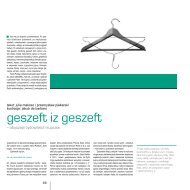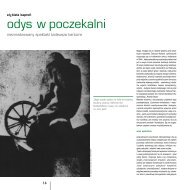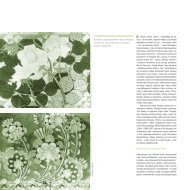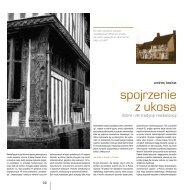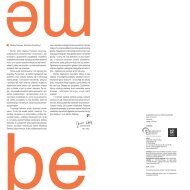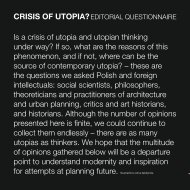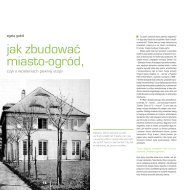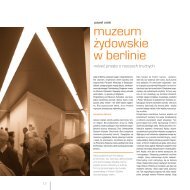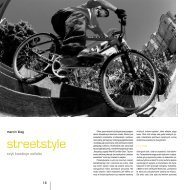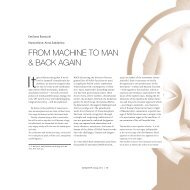ColleCtive luxury: - Autoportret
ColleCtive luxury: - Autoportret
ColleCtive luxury: - Autoportret
You also want an ePaper? Increase the reach of your titles
YUMPU automatically turns print PDFs into web optimized ePapers that Google loves.
ists stressed the importance of the railway<br />
system, supported public works as a means<br />
of development, and argued for a foundation<br />
of a new type of financial institutions<br />
necessary to finance the urban development,<br />
in that sense preparing the ground<br />
for Haussmann’s development of Paris under<br />
Napoleon III. These authors conceived<br />
a development of Paris focused on circulation<br />
of people, commodities and money;<br />
and the relationships between the vital<br />
urban center of public services, attractions,<br />
and the rest of the city. In that sense, the<br />
plans for Paris proposed by the Fourierists<br />
were inscribed in the new understanding<br />
of urban design developed since the late 18 th<br />
century in France which Michel Foucault<br />
in his lectures at the Collège de France in<br />
the late 1970s discussed with the term biopolitics:<br />
that is to say a series of techniques<br />
which exert control over the circulation of<br />
people, commodities, and capital according<br />
to an empirically identified statistical<br />
average rather than by a subjugation each<br />
subject to disciplinary measures. 18<br />
Foucault explained the emergence of the<br />
biopolitical regime by discussing late 18 th<br />
century urban designs such as the Rousseau<br />
plan of Nantes (1760). Perreymond’s<br />
projects for Paris published in 1842 and 1843<br />
in the Revue générale built upon this experi-<br />
18 M. Foucault, Security, Territory, Population: Lectures<br />
at the Collège de France, 1977–78 (Basingstoke: Palgrave<br />
Macmillan, 2007); M. Foucault, The Birth of Biopolitics:<br />
Lectures at the Collège de France, 1978–79 (Basingstoke:<br />
Palgrave Macmillan, 2008).<br />
The City of the 6 th Period (guaratisme) according<br />
Charles Fourier, 1822<br />
ence. The project depicts the center of<br />
the city but in fact it addresses the whole<br />
urban territory in order to tackle a series of<br />
problems, such as urban sprawl, economic<br />
development, hygiene, representation, and<br />
unemployment. The project of Perreymont<br />
introduces, basically, three decisions. Firstly,<br />
it unites the Île de Cité and the Île Saint<br />
Louis into an administrative and cultural<br />
center, giving it a public façade open to the<br />
new square which was envisaged over the<br />
filled southern arm of the Seine. Secondly,<br />
it introduces six arteries to connect this<br />
center with other parts of the city, the<br />
territory of the country and the overseas.<br />
The idea behind these arteries is, clearly,<br />
that of circulation and of flows, and this<br />
is best revealed in the way the monuments<br />
are treated, as objects which either modify<br />
the flows or which the flows swim round:<br />
a layout contrasting with the later geometry<br />
of Haussmannian Paris. Thirdly, the<br />
project suggested introducing a new market.<br />
Perreymond’s project changes the scale<br />
in which the city is imagined and designed,<br />
and this is best revealed when his project<br />
is juxtaposed with the de Laborde plan to<br />
which it was conceived as an alternative. 19<br />
In order to pass to this new scale of urban<br />
reality, new technologies of construction<br />
and transport were necessary, but also new<br />
modes of administration and new financial<br />
instruments, which conditioned Hausmann’s<br />
restructuration of Paris during the<br />
Second Empire. 20<br />
One of the essential aims of Perreymond’s<br />
project was to tackle unemployment by<br />
stimulating economic development. This<br />
theme was very much in the air in the<br />
debates in the 1840s Paris, and culminated<br />
in the February revolution of 1848 whose<br />
socialist postulates included the “right<br />
to work”. The centrality of work is the<br />
premise of Perreymond’s project, and the<br />
urbanist writes: “Work is the center of life.<br />
[…] Work is life, and life can only exist<br />
on conditions that it renew itself, that it<br />
propagate itself without ceasing, without<br />
19 Perreymond, “Études sur la ville de Paris,” Revue<br />
générale de l’architecture et des travaux publics 3<br />
(December 1842): cols. 540–4, 570–9; 4 (January 1843):<br />
vols 25–37; 4 (February 1843): 72–88; 4 (September 1843):<br />
cols. 413–29; 4 (October 1843): cols. 449–69; 4 (November<br />
1843): cols. 517–28.<br />
20 D. Harvey, Paris, Capital of Modernity (New York :<br />
Routledge, 2003).<br />
bibliotheque nationale, paris. reprodukowane za: bollerey,<br />
architekturkonzeptionen der utopischen sozialisten, s.101



